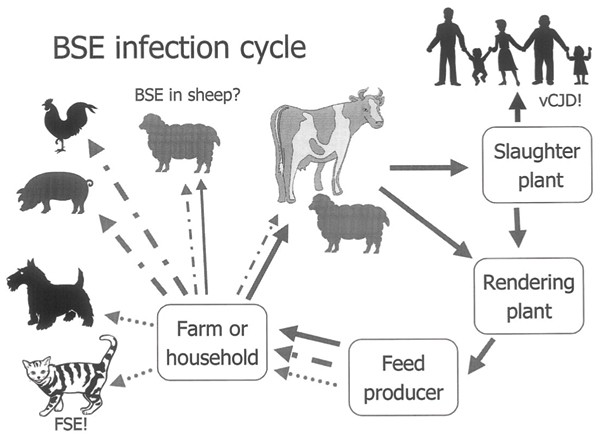Cell membrane /Plasma membrane
Plasma membrane or cell membrane
Plasma membrane or cell membrane is a dynamic , fluid structure and forms external boundary of the cell. It acts as a selective permeable membrane and regulates molecular traffic across the boundary. Plasma membrane behaves as a capacitor. In absence of integral membrane proteins, plasma membrane have similar electrical properties. The non conductive lipid bilayer of the membrane separates the conductive extracellular and intracellular electrolyte solutions. This results in the separation of charge across the lipid bilayer and this charge separation brings about an electrical potential difference across the bilayer which is referred to as membrane potential. Different models are:
Overton model
The Overton model,(1899) proposed by Charles Overton, suggests that the plasma membrane is primarily composed of lipids, and its permeability is largely determined by the lipid solubility of substances. This model is based on the observation that lipid-soluble substances readily pass through cell membranes, while water-soluble substances have more difficulty. On this basis he proposed plasma membrane is composed of thin layer of lipid, consisting cholestrol, lecithins and fatty oils.
Bimolecular lipid leaflet model
E Gorter and F Grendel experimentally demonstrated this model in 1926. The bimolecular lipid leaflet model, also known as the lipid bilayer model, describes the plasma membrane as a structure composed of two layers of lipid molecules, with the hydrophilic heads facing outward and the hydrophobic tails facing inward. This arrangement forms a barrier that separates the cell's interior from its external environment.
Trilaminar model/Davson and Danielli Membrane model
Davson and Danielli (1935) hypothesized that layers of proteins present on the both sides of lipid bilayer. The plasma membrane formed of a bimolecular layer of phospholipids sandwiched between two layers of protein. The proteins are in the form of folded β chains. The non polar hydrophobic ends of 2 layers of phospholipids face each other, where their polar hydrophilic ends are associated with protein molecules by electrostatic interactions between polar ends of lipid molecules and charged amino acid side chains. This model was an early attempt to describe the structure of the cell membrane, later refined by the fluid mosaic model.
Modifications of Davson and Danielli Membrane model
Some plasma membranes have folded β chains, Coiled α chains of helical proteins, Globular proteins of proteins on both the surfaces of lipid bilayer.
Micellar Theory
Hilleir and Hoffman(1953) proposed that the plasma membrane consist of a mosaic of globular subunits or micelles of lipid molecules. In each subunit hydrophilic polar ends of its lipid molecules are directed towards the periphery of the subunit. The globular protein forms a mono layer on either side of the lipid micelles. The space between globular micelles represents pores bounded partly by polar groups of associated proteins.
Unit membrane model
J D Robertson(1959) stated that layers of proteins present on both sides of the lipid bilayer and there is no space between two layers of lipids. He also mentioned that all membranes in the cell, ie, plasma and organelle membrane have the same structure. He described trilaminar structure of plasma membrane consisting of 2 parallel outer dense osmophilic layers of 2-2.5 nm. ER, Golgi apparatus, lysosomes , mitochondria, chlioroplast and nuclear membrane exhibit trilaminar structure.
Fluid -mosaic model
Proposed by Jonathan Singer and Garth Nicolson(1972) is now the most accepted model. In this model, membranes are viewed as quasi-fluid structures in which proteins are inserted into lipid bilayers. It describes both the mosaic arrangement of proteins embedded throughout the lipid bilayer as well as the fluid nature of the lipid bilayer. According to this concept, lipid molecules form a rather continuous bilayer that forms the structural frame work of the plasma membrane. The protein molecules arranged as extrinsic proteins on the surface of lipid bilayer and as integral proteins that penetrate lipid bilayer patially or wholly. The lipids and integral proteins of plasma membrane are amphipatic in nature. The amphipatic molecules tend to form liquid crystalline aggregates in which hydrophobic or non polar groups are situated inside the bilayer and the hydrophilic groups are directed towards the water phase. Therefore the lipid molecules form a rather continous bilayer. The integral proteins are intercalated in the lipid bilayer with the protruding from their polar regions and non polar regions embedded in the lipid bilayer. This arrangement explains why the active sites of enzymes and antigenic glycoproteins are exposed to the outer surface of the membranes.
Freeze fracture membranes support fluid mosaic membranes. The fluid mosaic model of membrane structure is supported by visual evidence by freeze fracture membranes of erythrocytes and other cell membranes. When the plane of fracture intersects the plane of membrane , the membrane splits into two producing 2 half membranes
E-leaflet(exoplasmic leaflet) : It is the outer half of the membrane .
P-leaflet(Protoplasmic leaflet): It is the inner half of cell membrane in contact with cytoplasm
References:
Pranav Kumar, Usha Mina, Life Sciences Fundamentals and practice I Eight Edition, Pathfinder Publication, New Delhi.
Dr. Veer Bala Rastogi, Introduction to Cytology,Tenth Edition
PKG Nair, K Prabhakar Achar, A Textbook of Cell Biology, Konark Publishers Pvt Ltd.
https://microbenotes.com/sandwich-davson-danielli-model-of-cell-membrane/





Comments
Post a Comment